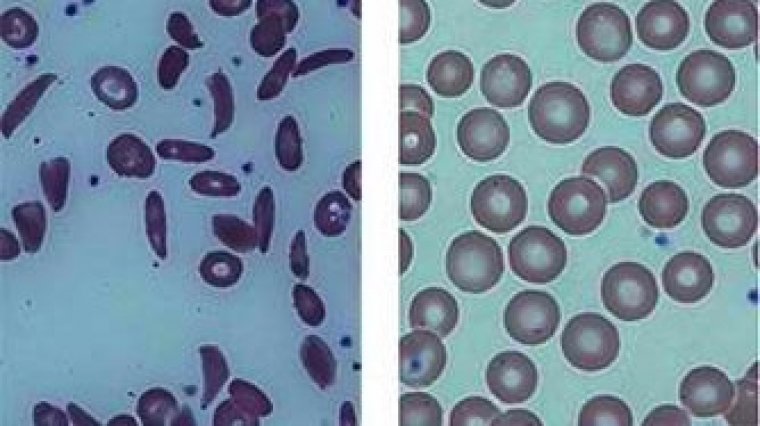| Health / Health News |
Stem cell transplant reverses sickle cell disease in adults
NIH | JULY 20, 2014
Sickle cell disease is an inherited blood disorder. The condition arises from a genetic defect that alters the structure of hemoglobin, the oxygen-carrying protein found in red blood cells. The modified hemoglobin causes normally round red blood cells to become stiff, sticky, and sickle-shaped. The deformed cells can block blood flow, causing severe pain, organ damage, and stroke.

Blood drawn from a sickle cell patient (left) and a patient after stem-cell transplant (right). Source: NIH Molecular and Clinical Hematology Branch.
There is no widely available cure for sickle cell disease. Some children with the disease have been successfully treated with blood stem cell, or bone marrow, transplants. This approach, though, was thought to be too toxic for use in adults. High doses of chemotherapy are used to destroy all of a child’s bone marrow, which is then replaced with marrow from a donor. Stem cell recipients typically need to take immunosuppressants for months to a few years. These medications can cause serious side effects.
In earlier studies, transplant recipients were found to have a mix of their own and the donor’s cells in their blood. Despite the mix, sickle cell disease was reversed. Based in part on these findings in children, as well as other preliminary work, a team at NIH’s Clinical Center in Bethesda, Maryland, set out to test a modified transplant procedure in adults with sickle cell disease.
Thirty patients, ages 16 to 65, with severe sickle cell disease enrolled in the study between 2004 and 2013. The patients first underwent a less toxic regimen to kill off some of their marrow cells. They then underwent a stem cell transplant, receiving cells donated by a healthy brother or sister.
The team found that the stem cell transplant reversed the disease in 26 of 30 patients (87%). The patients had normal hemoglobin, fewer hospitalizations, and lower use of narcotics to treat pain from the disease. The patients didn’t experience graft-versus-host disease—in which donor cells attack the recipient—after a median follow up of 3.4 years.
Fifteen patients successfully stopped immunosuppression medications a year after the transplant. The treatment was unsuccessful in 4 patients, and some complications, such as infections, occurred.
YOU MAY ALSO LIKE



